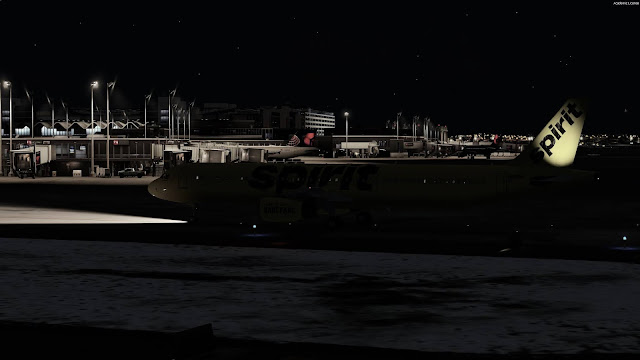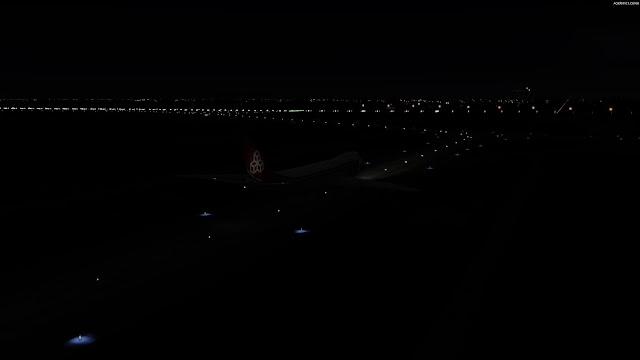Spirit Airlines (NKS) 245 MMUN-KMSP
KMSP FNO 01/22/21
Our short layover in sunny, tropical Cancun, Mexico came to an end and the crew bus would shortly be parked outside our hotel. I had finished reviewing the company dispatch for today's flight and my attention was drawn to the warm, tropical water as it continued to roll effortlessly onto the white, sandy beaches outside the window. The crew and I gathered our things and made our way out the front door of the hotel. A warm southerly breeze brushed across our faces as we exited the hotel foyer and made our way to the crew bus. We pulled our heavy suitcases filled with trinkets purchased from local vendors, wet beach towels, and tropical attire and met the friendly crew bus driver. Each of us slowly boarded, not wanting to leave this tropical paradise as we knew our destination, Minneapolis, Minnesota would not be as accommodating. The forecast for arrival would be a balmy 12 degrees Farenheit, with a winter advisory in effect. We hoped to make it in and out before the white stuff began to blanket the surrounding area, thus causing yet another deep freeze. But, this would be an overnight stay with no beach or tropical weather in sight.
We arrived at the airport, quickly made our way through security and grabbed a quick snack before heading to the gate. The previous crew left our Airbus A321 in pristine shape and the F/O began the walk-around while I set up the MCDU for our 4+ hour flight which would take us across the Gulf of Mexico and enter the southern United States near New Orleans, Louisiana. The flight plan continued north across Mississippi, Arkansas, Missouri, Iowa, and finally into Minnesota. I had a quick look at the departure board at the airport and noticed we'd be joined by two other flights heading back to KMSP this afternoon: Sun Country (SCX) 574 and Delta (DAL) 1936.
The lead flight attendant notified us boarding would begin soon just as the F/O returned to the flight deck. The pre-flight cockpit preparation was completed and the flight plan was received via a company ACARS message. The sound of voices began to appear near the left front door as boarding began while baggage carts arrived at the side of the jet. Clearance delivery was contacted and today's departure runway would be 12R, via the NOSUG 1A RNAV departure to the north. A quick look at the charts would provide for a scenic departure overhead the hotels and lovely white beaches surrounded by a thick blanket of tropical trees. Unfortunately, the cloud base was low today so our views would be short lived during the departure.
There wasn't much traffic at the airport today, other than ourselves, our friends SCX and DAL, along with a Turkish flight and a pair of Aeromexico flights taking the taxiway. Our preparation was completed, the passengers were boarded, and the ground crew handed me the final loadsheet. We were heavy today and we input the final performance numbers for take-off. "Ground cockpit" was heard over the intercom as final push instructions were provided to the ground crew. We'd be last to push today on the apron while SCX and DAL took the lead for our departure.
We were pushed "tail right" and the jet came to rest facing south along Terminal 4. Sun County and the Delta flights had already made their way down taxiway C and Delta 1936 was cleared to line-up on runway 12R as SCX departed to the north, climbing through the low layer of clouds. The F/O and I worked our way through the relative checklists and we began our taxi to runway 12R.
I gave a quick wave to Delta 1936 as the A321's CFM engines came to life, hurdling 1936 down the runway. The tower cleared us to line-up and wait on 12R while a United flight approached from the northeast, preparing to arrive on runway 12L. After waiting a few minutes for flight separation on today's route, we were cleared to depart. The throttle levers were pushed forward, allowing the engines to stabilize. The throttles were advanced forward to flex speed and our IAE engines came to life and Spirit Wings 245 began its journey to the great "Deep Freeze" in Minneapolis.
I hand flew the departure as we entered the clouds and the call for "autopilot 1" was called. The F/O activated the autopilot and we settled in for the flight. The cruise to the north was rather uneventful with fairly smooth air, but a quartering headwind would keep our ground speeds at bay, slowing our progress. Which was fine, because a METAR report from the company showed expected cold temperatures in Minneapolis so we weren't too upset out being slightly delayed.
We continued along the planned route and the high center frequencies were rather quiet for this flight. Traffic and radio chatter began to pick up as we crossed into Kansas City and Chicago Airspace. Descent preparations were made and one last check of the MSP ATIS would have us prepare to land on runway 30L. Thankfully, the snow had not moved into the area and the arrival runways would be free of snow and ice, making things a bit easier on the landing rollout. Performance data was entered into the MDCU and descent instructions were handed over as we transitioned to Minneapolis Airspace. We would be descending via the BLUEM 3 arrival into KMSP and as other pilots began connecting to the frequency, the arrival board for MSP began to fill up with numerous arrivals from both the west and east. We would be lucky to slot into the mix without any delays or go-arounds. The MSP controllers are always top notch so the flight deck was calm and collected while going over the approach checklist.
We were handed over to the MSP approach controller and our planned arrival onto runway 30L was changed to a visual approach to runway 35. No worries, as we had plenty of time to update the MCDU for the new arrival as well as add a few range rings and an extended center line. A few vectors right of our course were provided for sequencing and a final heading was provided toward the airport. The localizer was captured as we entered the final flight path for RWY 35 and the airport was called "in-sight." We were handed over to tower, who was handling multiple arrivals onto runways 30L, 30R, and 35. We were nearing the 5 mile mark when I was able to finally contact tower and advise "inbound visual 35." "Spirit Wings 245, cleared to land RWY 35" and the gear was lowered along with final flap callouts.
The A321 crossed the threshold and the main gear touched down with a gentle "bump" and the nose gear was slowly lowered onto the center line. I vacated RWY 35 onto taxiway Y and not being familiar with this side of the airport, I had to quickly gain my bearings while receiving taxi instructions to the E concourse at Terminal 1. The night lighting at the airport and surrounding ambient lighting was wonderful as we made our way to our holding point "W8" and holding short of RWY 30L for arriving traffic. The taxiways were full of other aircraft tonight as we navigated the taxiways and listened for radio calls from the tower. After an approximate wait of 5 minutes, we were finally cleared to cross RWY 30L and to contact ground on the other side. After a few more turns, holds, and delays, we finally made it to E2 and shut down the engines, while the ground crew began to unload the baggage.
The shutdown checklist was completed while our A321 was secured for the next flight. The plane would remain parked at the gate for tonight, with an outbound flight back to MCO planned for an early morning departure. The crew and I grabbed our things and changed our "tropical mindset" for a "bitter cold" mindset as we entered "Operation Deep Freeze."
Thanks to the wonderful service and various controllers on the VATSIM frequency tonight in MSP airspace and surrounding airspace. FNO's are always a joy to fly and "The Nutters" always look forward to participating. Until next time......
Software used for today's flight:
P3D v5
Flightsimlabs A321
FSimStudios MMUN Airport
Flightbeam KMSP Airport
ActiveSky P3D with Active Sky Cloud Art
Navigraph Charts and Database
VATSIM w/vPilot
GSX
Orbx NA openLC














































































